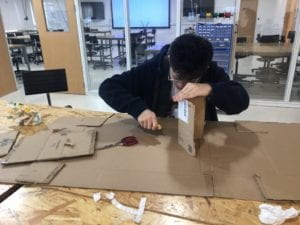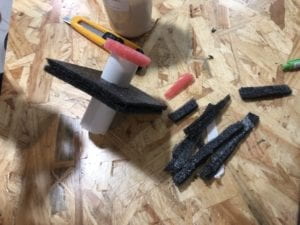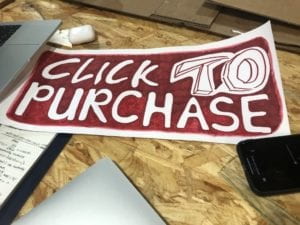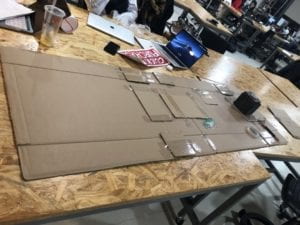During the period of time when I struggled to figure out where the true meaning of “interaction” lies, Crawford’s idea helped me a lot after I went through the reading for week 1. In his article, he defines interaction as a special conversation and “a cyclic process in which two actors alternately listen, think, and speak” (“The Art of Interactive Design”, Crawford, pp.3). The process of interaction is exactly like a conversation. No matter such communication happens between human and human, human and creature or human and artificial objects, it must always go through the three stages of listening, thinking and speaking since it is how we share information and how ideas are conveyed between different individuals. The following process of digesting and collaboratively responding can only happen when the intention and perception are fully delivered. For the modern era, where the new media has become an extremely important part of our daily lives, Igoe and O’Sullivan further give a more accurate expression of these three stages. It is stated: “Most physical computing projects can be broken down into these same three stages…input, processing, and output” (Introduction to Physical Computing, Igoe and O’Sullivan). These three stages are the basis of interaction, but I would rather describe them as receiving signals, digesting information and giving reactions. When I think about the subject of interaction, I feel that interaction can involve more than two participants, which often happens in doing a group project and dealing with complex equipment.
So here is my definition of interaction. Interaction is a series of processes involving two or more actors’ effort to achieve a mutual goal (for entertainment or live more effectively and conveniently) and is based on the ability, which creatures or artificial objects possess, to give reactions to external stimuli (to each other) through thinking or processing. This kind of action can usually display people’s intention and idea and realize the value of objects.
Two Projects that I choose to better and clearer state my idea of interaction are “Anti-Drawing Machine” and “Open Highway”. Though the “Anti-Drawing Machine” seems unreasonable and funny, it does interact with people since it could sense human’s intention of drawing and do movements to destroy their artwork after “thinking” about the signal while people at the same time would receive the information of “my masterpiece” is being destroyed and would give reactions immediately to fulfill their work. The efforts of two result in achieving the goal of entertainment and successfully create a new picture. On the contrary, the “Open Highway” aligns less well with my definition of interaction since it is basically a map with modern technology. Though it clearly depicts the “hidden highways” beneath the city, it only navigates people rather than involve them in some kinds of interactive activities. People do not need to give responses to this map and neither does the map need their feedback.
For our design, we’ve successfully presented this idea of interaction. We started from thinking about what people would like to have in 100 years and not yet exists now. “Nanny machines” would be perfect but it does not correspond to our perception of interaction that well since it is designed to take care of everything and does not rely on people’s reactions. Thus, we thought about what aspect of daily life could involve people far more than now with the use of advanced technology. The answer was the advertisement. Ads today are more like one-way broadcast rather than an activity of interaction with people’s feelings and reactions involved. With 4D project technology and artificial intelligence, the advertisements in the future could be more humanized and individual-tailored.




The appearances and emotional feelings of people would give the information for the billboard to listen (receiving signals), and it would go through a stage of automatically analyzing the need of people (digesting information), after which it would give highly-fitted recommendations (giving reactions). Same for people, after unintentionally conveying the information, they would receive signals from the billboard and they would say “no” by waving, “yes” by clicking or “change a recommendation” by asking after they digest the information. With these processes going on and on, our 4D Interactive Billboard successfully achieves interaction.
